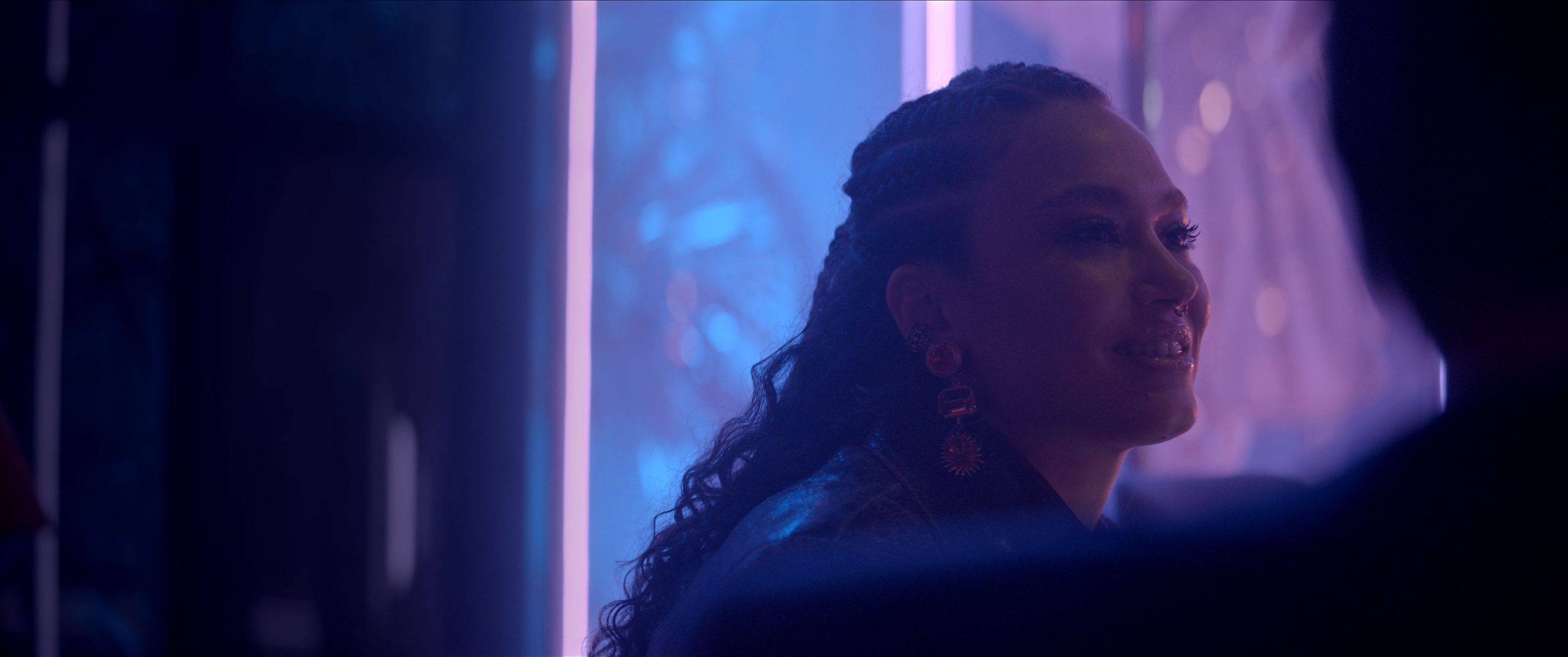The Aesthetically Developed Nighttime Encounter
in 37th Warsaw International Film Festival
by Jan Storø
In his latest feature, the Turkish director Umut Evirgen invites us to a night in Istanbul. On the pavement outside a restaurant doubling as an entertainment venue, a woman of 24 and a man of 54 suddenly find themselves in an unplanned situation, while having a cigarette. Without knowing each other, they start talking, and seconds later they are off – on a motorbike – after dark in the big city. Meeting Point (Kimya, 2021) tells the story of the few hours they spent together on that specific night.
The young atheist and the middle-aged muslim do not have any obvious reason to set out on this adventure together: this we sense from the very beginning. They seem to lead very different lives, as their appearances reveal. She is stylishly dressed, wearing heavy make-up, piercings, and many rings on her fingers. He, on the contrary, is conservatively dressed, as any businessman is.
Meeting Point has a stunning visual style. Both the cinematography, the sound and the music work together creating an experience for the senses. The strongest single element is Veli Kuzlu’s cinematography. Kuzlu uses “all” the tools in the toolbox and manages to create an esthetical universe that suits the story. Evirgen’s script handles many small details in an elegant way and ties all loose ends together in the last part. Naim Kanat’s editing is also very important for the end result.
A film that scores high on visuality should carefully be reviewed also when it comes to content. There is always a danger for visually oriented film makers to “fall in love” with their own aesthetic representations. In Meeting Point, this tendency is also visible in some scenes. One example is a music scene where we see and hear the band (with a focus and the saxophone player) in a nightclub, when our protagonists arrive. The scene is beautifully photographed, the music is good, and this type of scene contributes well to the story. But it is too long. This two-three minutes (my humble guess) scene feels more like a music video, de-attached from the main story. Cut down to twenty or thirty seconds, it would strengthen both the tempo and content of the story told in the film. There are other examples of this “love of aesthetics”, but luckily, they don’t dominate the film.
Another discussion of content calls on the film’s ideas. Meeting Point presents several topics for reflection during the story. We meet the active and self-determined woman, trans-gender people are portrayed with a warm smile (in the night-club scene). And the middle-aged man is portrayed as a person who has lost an element of inner energy. These characters are interesting.
The film also implicitly discusses the young person’s willingness to take risk versus the older person’s tendency to seek safe solutions. The latter is, unsurprisingly, challenged during the events we witness.
The female protagonist presents a one-liner that will live in the future, something like: “I have watched every film that has ever been made, and I can tell you; that does not exist!”
The idea of bringing people from very different backgrounds together in a film is not new. Rather, this dramaturgic grip has been explored many times before. Therefore, it is interesting to reflect on whether Evirgen presents enough freshness for us to spend one and a half hour in the cinema.
Discussing this, it is tempting to compare some of the choices behind Meeting Point with another film that also tells the story of an encounter between two strangers, and what happens the next few hours after they meet.
Richard Linklater’s Before Sunrise (1995) tells a story that unfolds in Vienna during one night. The movie stars Ethan Hawke and Julie Delpy, playing two young people travelling from Budapest to Vienna by train. They start talking, and the conversation lasts for the next twenty-four hours.
Evirgen’s image-driven film is very different from Linklater’s dialogue-driven film. But also, the actual contents differ remarkably. Linklater wants us to ask ourselves if his story actually is the start of a real love story. Evirgen is not close to this. His project seems to be visualizing how people in the modern world may encounter and possibly get a glimpse, lasting only a few seconds, into each other’s souls. Meeting Point is, as the title suggests, about a meeting. But it is also about loneliness.
The third film made by Umut Evirgen is very well made. But the craftsmanship of filmmaking needs to be put into motion, to deliver us extraordinary experiences. For some people, Meeting Point will probably remain an aesthetic exercise with little content. For others, it offers more, among them some observations on gender roles, sexuality, and the loneliness of our souls.
I suggest that its audience should look for the latter of these options.
Jan Storø
Edited by Savina Petkova
© FIPRESCI 2021

